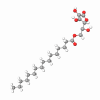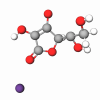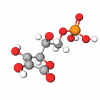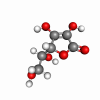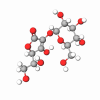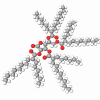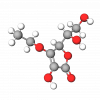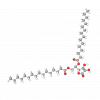Vitamin C, chemically known as l-ascorbic acid, has been valued for centuries due to its incredible ability to prevent disease (such as scurvy), and for its important role in many biological functions. It participates in a number of oxidative reactions such as the hydroxylation of proline and lysine to form hydroxyproline and hydroxylysine (the precursors to collagen), as well as reducing melanin to a colorless substance.
In recent years, ascorbic acid has been touted as a powerful antioxidant, scavenging free radicals within the cell. Since vitamin C is not synthesized within our bodies, it is crucial that we consume this vitamin dietarily through citrus fruits, green leafy vegetables, or supplements.
Various studies have been conducted over the years to demonstrate the benefits of topically applied ascorbic acid. One such study entitled “Topical Vitamin C Protects Porcine Skin from Ultraviolet Radiation-Induced Damage” performed by the Duke University Medical Center, Division of Dermatology, USA, shows the antioxidant role vitamin C plays and the photoprotective benefits the ascorbic acid displays.
Applied topically, vitamin C derivatives like Ascorbic Acid/Orange/Citrus Limon/Citrus Aurantifolia Polypeptides penetrate into the deeper layers of the skin boosting collagen production, fighting against oxidative stress, and brightening complexion. Free radicals can then be scavenged, collagen synthesis restored, and melanin reduced to inhibit the formation of freckles and lighten the skin, and thus the signs of aging diminish.Ascorbic Acid/Orange/Citrus Limon/Citrus Aurantifolia Polypeptides is a stabilized form of ascorbic acid. Much like the way it is found in nature, the ascorbic acid is complexed with the polypeptides found in citrus pulp, thus improving its stability.
Chemistry
The best sources of vitamin C in nature are citrus fruits, hip berries, acerola cherries, and fresh tea leaves. In its natural state, the vitamin is always conjugated with water-soluble proteins or polypeptides and generally occurs in conjunction with related compounds, the bioflavonoids. However, most of these materials are eliminated when the vitamin is extracted. Whether vitamin C is isolated from its natural environment or produced synthetically vitamin C is quickly oxidized and loses its functionality in aqueous solutions and in water-containing formulations.
In contrast, Ascorbic Acid/Orange/Citrus Limon/Citrus Aurantifolia Polypeptides is a conjugate in which the vitamin is complexed with low-molecular-weight citrus pulp proteins or polypeptides and is associated with naturally occurring bioflavonoids. Due to this unique association, the vitamin becomes water dispersible, which is key for the utilization of the vitamin: absorption is greatly increased, infiltration into the dermal structures is facilitated, and toxicity or irritation potential is almost completely eliminated.
